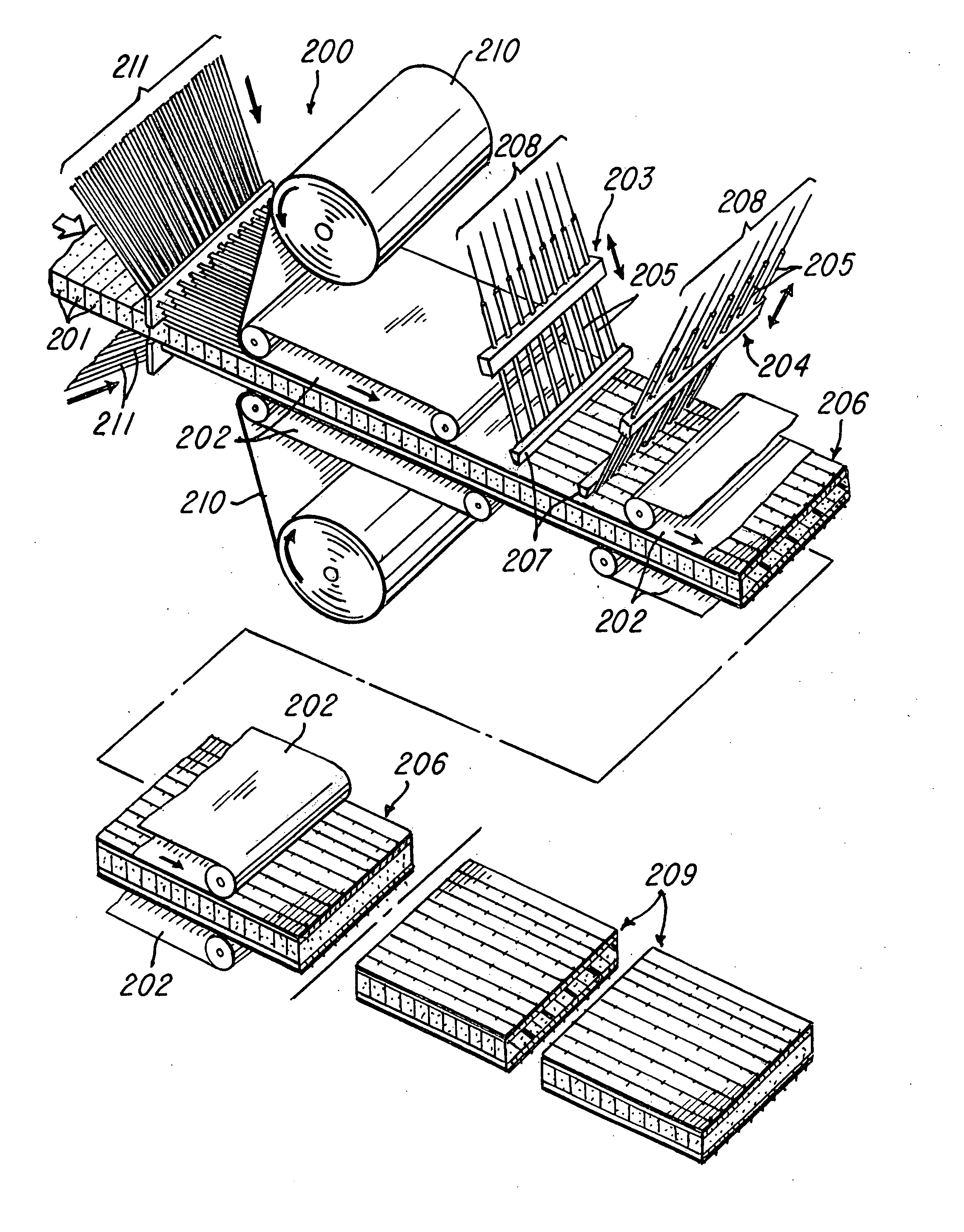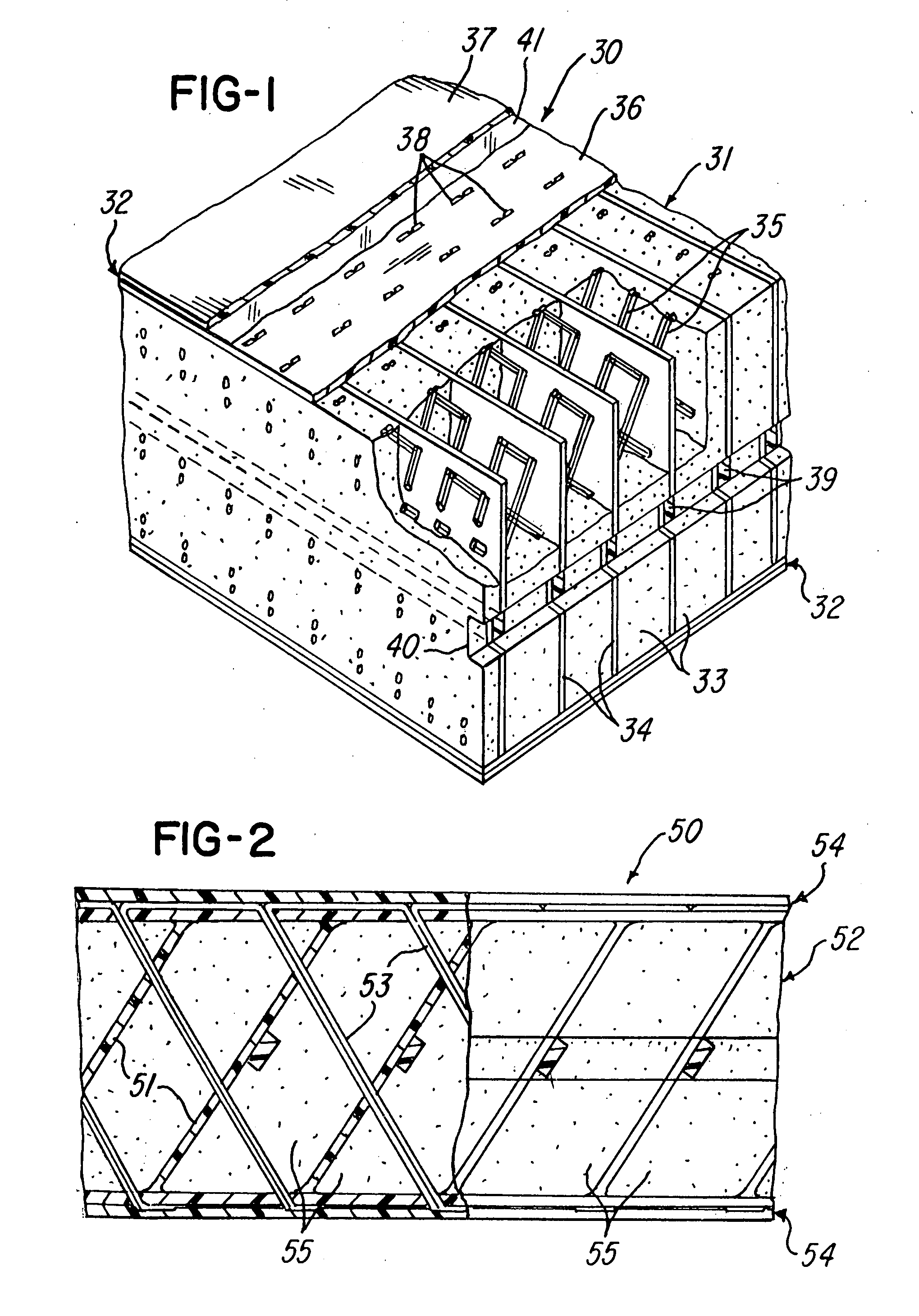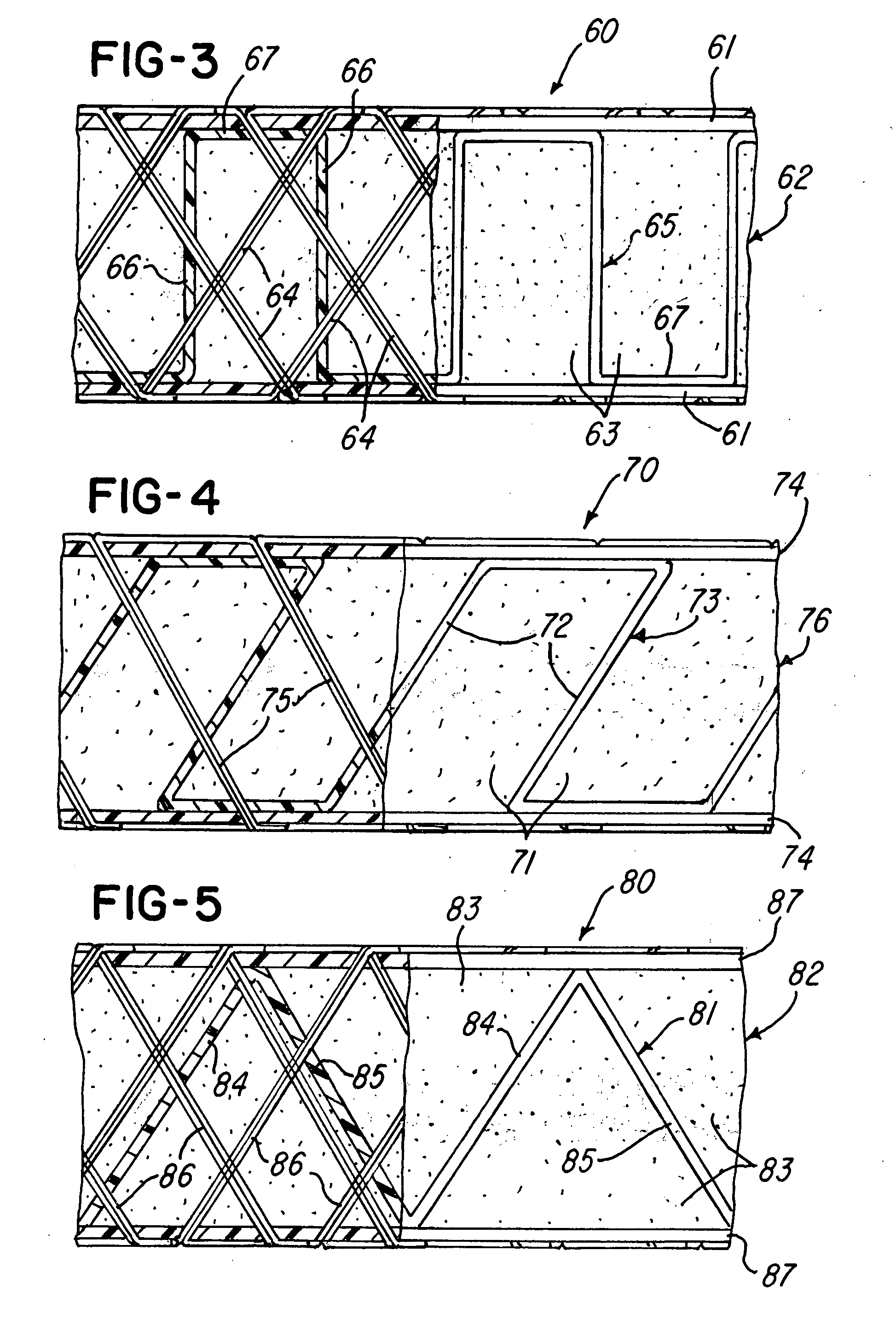Fiber reinforced composite cores and panels
a fiber reinforced composite core and core technology, applied in the field of composite structures of sandy panels, can solve the problems of reducing the dimensions of the core components, increasing the difficulty of processes, and limited impact damage to the immediate area, so as to improve the buckling resistance of the unidirectional core, reduce the effect of impact damag
- Summary
- Abstract
- Description
- Claims
- Application Information
AI Technical Summary
Benefits of technology
Problems solved by technology
Method used
Image
Examples
Embodiment Construction
[0081]FIG. 1 illustrates a structural composite sandwich panel 30 which may be used, for example, as the floor of a highway truck cab, the hull or transom of a boat, the roof of a factory building, or as a vehicular or pedestrian bridge deck. Panel 30 comprises a fiber reinforced closed cell plastic foam core 31 and opposing fiber reinforced skins 32. Foam core 31 comprises a plurality of foam strips 33, whose structural properties are insufficient to resist loads in the core which would correspond with loads for which skins 32 are designed.
[0082]The core reinforcing fibers, which are selected to impart the required structural properties to the core, are of fiberglass or carbon fiber or other reinforcing fibers. In one direction, the reinforcing fibers comprise a plurality of parallel sheets or webs 34 of porous, fibrous fabric or mat which extend between the faces of the core 31 and which have been adhesively attached to one face of each foam strip 33 while maintaining substantial ...
PUM
| Property | Measurement | Unit |
|---|---|---|
| Pressure | aaaaa | aaaaa |
| Angle | aaaaa | aaaaa |
| Length | aaaaa | aaaaa |
Abstract
Description
Claims
Application Information
 Login to View More
Login to View More - R&D
- Intellectual Property
- Life Sciences
- Materials
- Tech Scout
- Unparalleled Data Quality
- Higher Quality Content
- 60% Fewer Hallucinations
Browse by: Latest US Patents, China's latest patents, Technical Efficacy Thesaurus, Application Domain, Technology Topic, Popular Technical Reports.
© 2025 PatSnap. All rights reserved.Legal|Privacy policy|Modern Slavery Act Transparency Statement|Sitemap|About US| Contact US: help@patsnap.com



